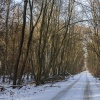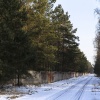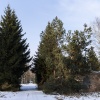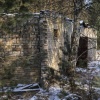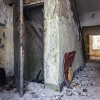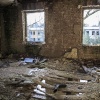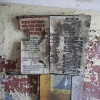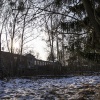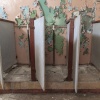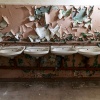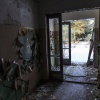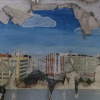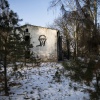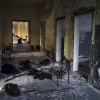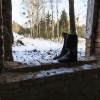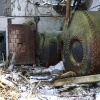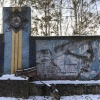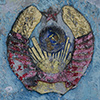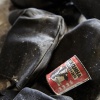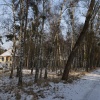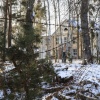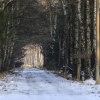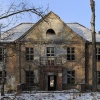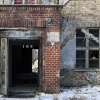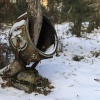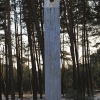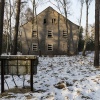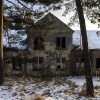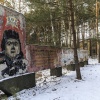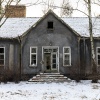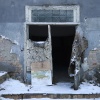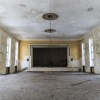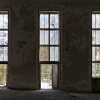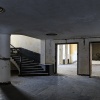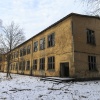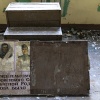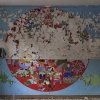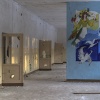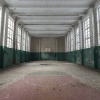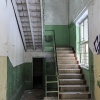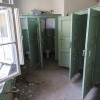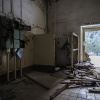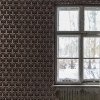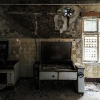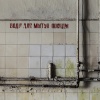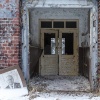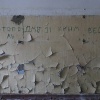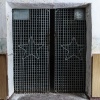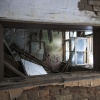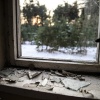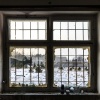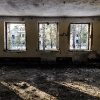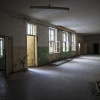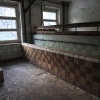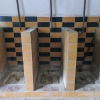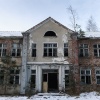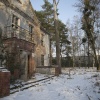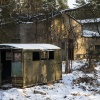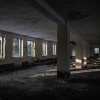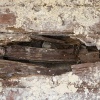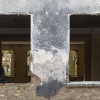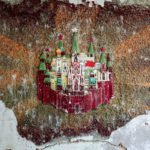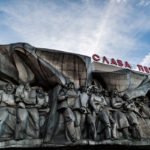East Germany’s Soviet Heritage – Vogelsang’s abandoned Military Garrison
After World War II a huge area being located less than a 1 hour car drive away from the highway ring surrounding Berlin became one of Soviet Army’s most important military sites. This abandoned garrison is located near the city of Zehdenick, in the north of the village Vogelsang. At peak time up to 15.000 people lived and worked in the present-day ghost town; soldiers, their relatives as well as civil associates. Some of them controlled nuclear missiles pointing to the west – a piece of Cold War and living history.
You approach this very special Soviet Army heritage by a dead straight ~3km long hike through Brandenburg’s forest. While walking towards the check point through an alley of different trees and passing the first military buildings, which were the missile regiment’s home, escaping roes have a shy glance at you. The mighty fir trees at the check point shack seem to continue the soldiers’ job that is forming a guard of honour which now you may pass without showing any identification papers.
After that you can surrender yourself meandering through a maze of abandoned buildings gone to rack. However you have to be very careful since the whole complex is still polluted with ammunition remains and the buildings’ structure isn’t all too good as well, meaning weak ceilings and not the omnipresent wall paint peeling off.
The military cities of Wünsdorf, being located to the south of Berlin, and Vogelsang represented the most extensively built-up and populated areas in former East Germany. It’s diversity as well as strike capability surely also exceeded the one or another garrison in Soviet Army’s home country. The Vogelsang complex accommodated a division of GSSD, a German shortcut standing for Group of Soviet Forces in Germany, hence the military city was home of several branches of military service like large numbers of mobile infantry as well as armoured corps, that made extensive use of the military training area being located to the north of bordering Havel River.
Protruding from that mass of troops were the 1702nd missile regiment as well as the tactic missile brigade that was directly subjected to the Soviet Army command. Between 1959 and 1960, hence before Cuba Crisis, Vogelsang and Neuthymen, a further northwards located second military base, verifiably accommodated each six R-5M Pobeda nuclear missiles (CIA name Shyster or SS-3) aiming to targets in France and Great Britain and their US-American missile launch pads being part of the NATO missile system “Thor”. Every single R-5 missile had an explosive power of 20 Hiroshima bombs.
The Vogelsang complex got completely new constructed, planned, erected and financed by GDR. For example you can recognise this by the light switches and electric sockets being used plus the non-Cyrillic captions showing 220V and 380V. Since the Soviet Army moved out in 1994 the whole site lies idle. The northern barracks and grounds bordering with Havel River already got torn down entirely. There’s more information on Vogelsang in German language on the Heimatgalerie website and also the BBC made it to Vogelsang.
Being home to at least 10.000 people and involving more than 270 buildings, the former military complex is pretty extensive and comparable with a small town. And like small towns do, Vogelsang also had an own school, a theatre, several sports facilities and a big magasin, what to the Soviet soldiers was what a supermarket is for us nowadays. At some places murals still tell stories of a better time, when tank drivers praise the strength of the Soviet army or when elsewhere the soldiers’ wards – that are workers, peasants along with mothers and children – are prancingly hailing in front of the rising sun.
Through the mass of houses, then strictly military used properties, now blows the wind. For example through the big windows of the men’s quarters which are easily noticeable by its wide dormitories and of course a sanitary area being capable to serve more than only 1 person. But not everything visible is automatically of Russian origin, like the scrawl of home going men, as nowadays a couple of graffiti mingle with the overall image. Among them is only one good one, which is the teeth baring face inside the theatre.
Also while strolling along one of the main roads you can bump into former Soviet icons, for example when suddenly a concrete pillar interrupts the sequence of tree boles, a pillar still displaying the shadow of Lenin’s likeness at the top. Through the spotlight that once illuminated Vladimir Ilyich Ulyanov, the big revolutionary leader, wriggles now a young pine. No matter if tree, roes, woodpeckers or mould, nature reclaims successively back what belonged to it someday. Hence even the big metal plates embedded into the ground, the still existing nuclear missile launch pads, are hard to find now, in particular at snowfall.
My photo series “East Germany’s Soviet Heritage” reflects my interest for history. Germany and Russia are nowadays as well as back in the days tighly connected and experienced moment of glory as well as agony. That’s exactly what this photo series shall reflect, not at evaluation, not as propaganda, but as a document and intellectual approach.
For lovers of Hello Kitty like coloured HDR pictures the Vogelsang base is paradise. However, that is not my “quality” standard, hence the photos shown here serve as a document without unnatural light or magically appearing artificial colour and are not joining the parade of HDR-based vanities and cheap sensationalism. My company was Russian friend and photographer Victor Boyko.

